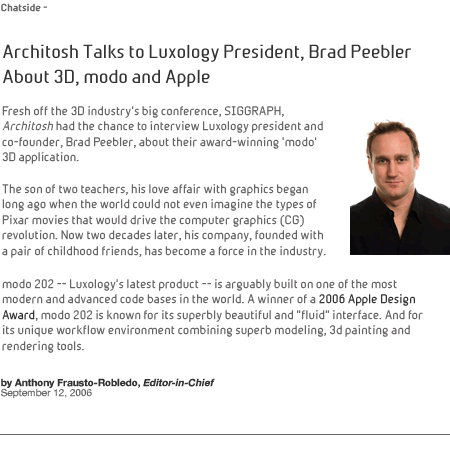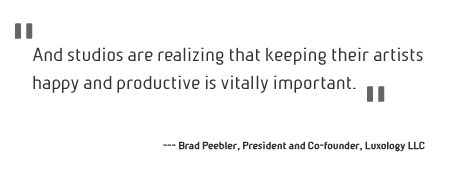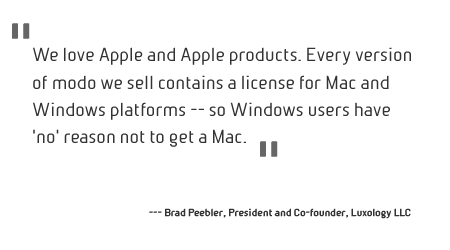|

AFR:
How did Luxology get started? Can you tell me a bit about
that and your background?
Brad
Peebler (BP): Sure. The founders of Luxology are Allan
Hastings, Stuart Ferguson and myself. Actually, Allan
and Stuart have known each other since they were kids
and grew up working on computers and doing some pretty
cool stop motion 8mm animation. They have been working
on that kind of stuff since middle school. They are more
than just programmers. They are graphics junkies like
the rest of us. Some of Allan's early modo renderings
hold up well, even today, to literally hundreds of excellent
customer renderings submitted to us.
Anyway,
we have been together now for over 15 years as a team.
Along the way we were fortunate to have built two great
products: Lightwave and modo.

So
your background includes Lightwave?
Yes.
I joined NewTek when the company was in Kansas, as a
product support technician manning the phones! In some
ways not much has changed (laughter). I still spend as
much time every single day using our software, creating
stuff for tutorials and making sure new features not
only "work" but fit into the flow of using
modo.
So
as a team you guys founded Luxology after being together
at NewTek. You know, the market is already quite busy
with many superb 3D packages, what was the main reason
for creating modo?
The
main reason we created modo was to create something we
would really like to use ourselves. There was plenty
-- and still is plenty -- of 3D software out there that
works from a "feature" standpoint. But we created modo
for artists who want to work in a software package that
really works as expected and promotes the feeling of
flow.
What
do you mean exactly by "flow"?
Our
user interface (UI) is so fluid, for example, that artists
can mold the UI as they move from task to task. Need
a side view here with a background image of the side
of a person's face and then an item list along the bottom?
No problem, just arrange it and then change it for the
next task.

Where
does modo fit into this busy market?
modo
is accessible in its price point for the enthusiast...and
yet offers truly professional quality output in the form
of super clean models and high-quality images. We are
the only [3d] application that tightly binds modeling,
painting and rendering into a fused workflow. You can
model, for example, and see the renderer update!
And
what about larger pipelines?
We,
of course, designed modo to work well with other applications.
In today's world people are using whatever is best for
the task or project at hand.

A
lot of Hollywood and visual effects studios work with
a wide variety of 3d tools, including custom tools. How
does modo fit into and improve those pipelines? What
are the benefits?
You
are right. Pipelines are becoming more porous.
And
studios are realizing that keeping their artists happy
and productive is vitally important. We designed modo
to work well for artists and that is one way modo makes
its way into a studio -- kind of from the bottom up.
You
mean, from the artist, right?
We
have people write us and say they go out of their way
to look for projects just so they will have a reason
to use modo. So another way to answer your question,
one of the biggest benefits to using modo is that artists
are wearing a smile and looking forward to their work
every day. I am not saying modo makes 3D "easy", I am
saying that using modo is a very rewarding experience,
sort of an endorphin generator.
continued...>
page:
| 1 | 2 |
|






![]()
![]()